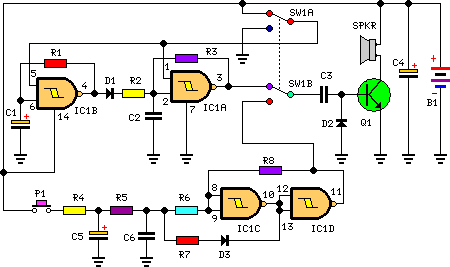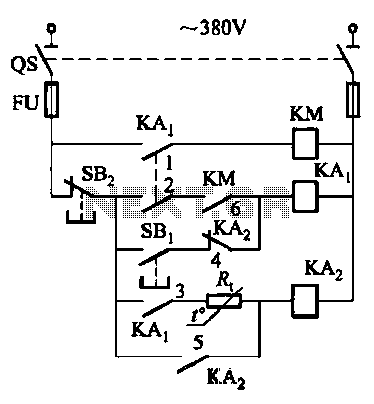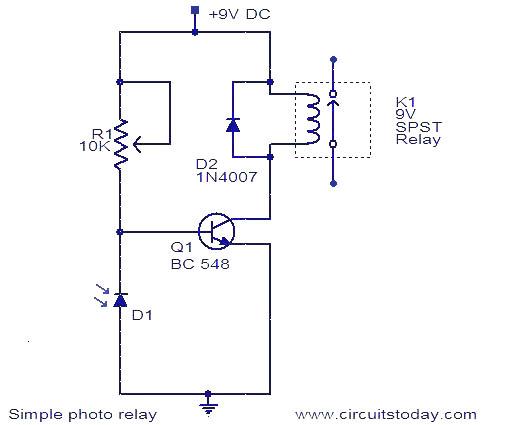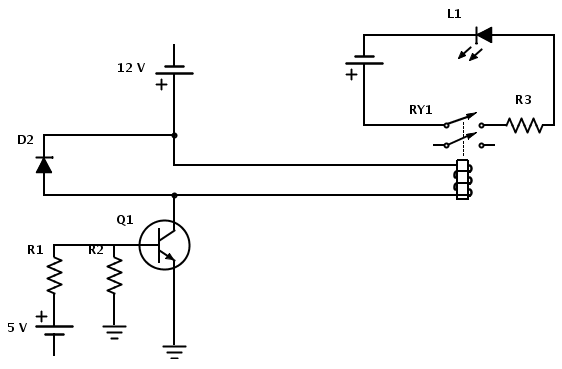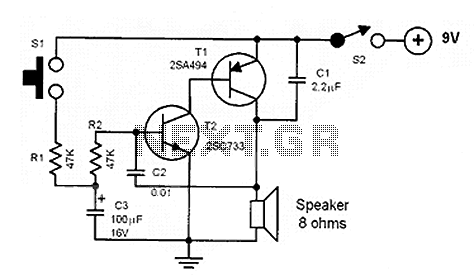
Two buttons Safety relay
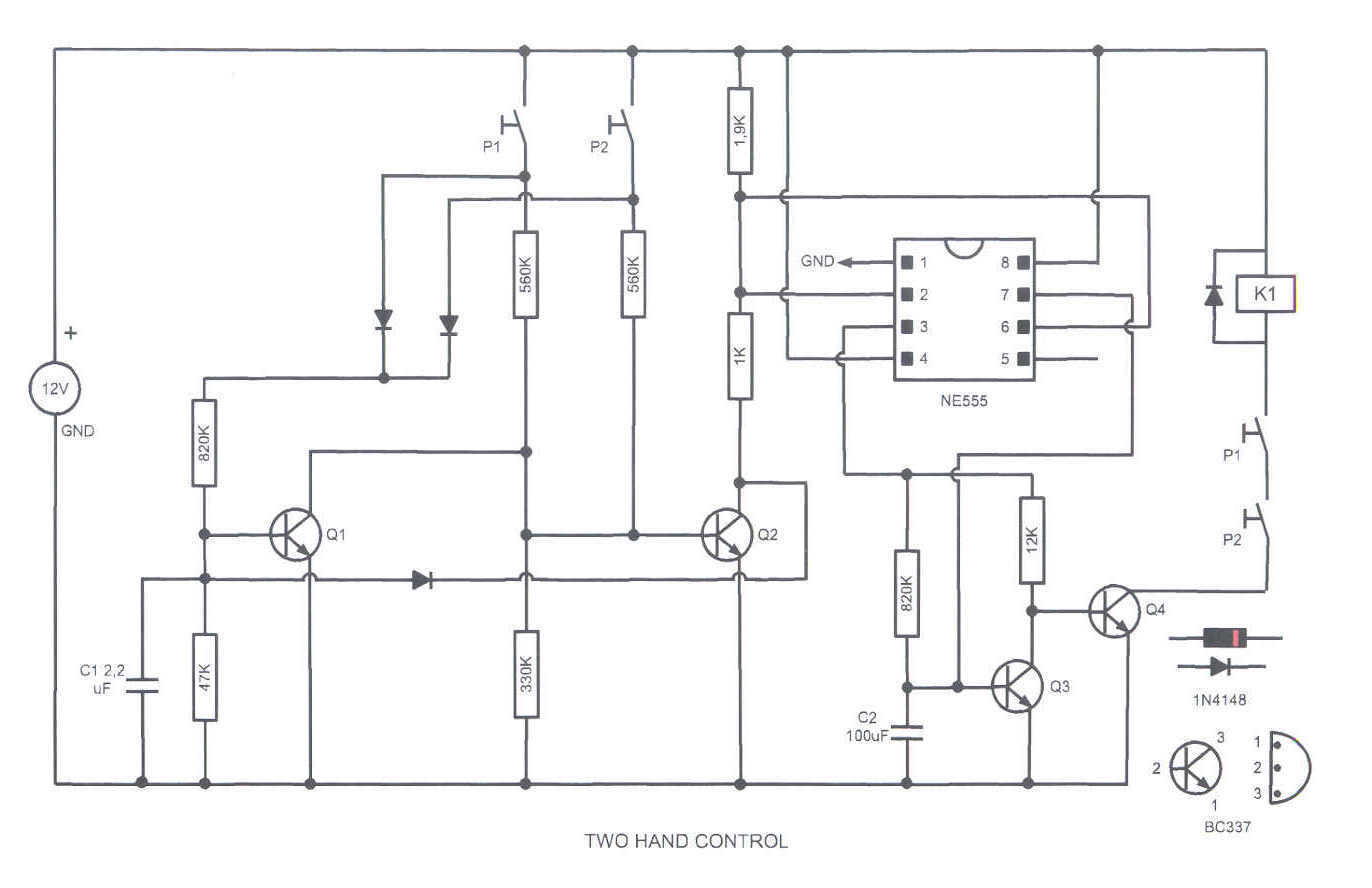
The described circuit operates as a safety mechanism through the simultaneous activation of two push-button switches, which is a standard practice in industrial applications to mitigate the risk of accidental activation of machinery. The circuit design incorporates two buttons that must be pressed concurrently to energize the relay. This simultaneous action helps ensure that the operator's hands remain at a safe distance from hazardous moving parts during operation.
Upon powering the circuit, the input voltage at designated pins (2 and 6) is initially high, keeping the relay in an inactive state. When the first button is pressed, it creates a path for current to flow through a resistor (560 kΩ) to the base of the second transistor (Q2). However, the high resistance value limits the current, keeping Q2 in an almost off state and maintaining a high voltage at the collector, which is crucial for the relay's operation.
The circuit is designed with a timing feature that allows for a tolerance of 0.5 seconds. If the second button is not pressed within this window, the first transistor (Q1) will activate, preventing Q2 from turning on. This ensures that both buttons must be pressed within the designated time frame to allow the relay to engage.
Once both buttons are pressed, the relay is energized, and it remains active for a predetermined duration, which is adjustable by changing the capacitance of capacitor C2. After this time elapses, the relay will automatically disengage, requiring the operator to release both buttons and press them again to reactivate the relay. This feature is critical in ensuring that the operator is aware of the machine's status and is prepared for its operation.
To enhance safety, the circuit includes a series connection of the buttons, which acts as a fail-safe mechanism. If one button fails to operate correctly, the relay will not be activated, thereby preventing unintended machine operation. Additionally, for further safety assurance, the implementation of two relays along with an LED indicator is recommended. The LED will provide visual feedback to the operator, alerting them if one of the relays becomes stuck in the 'on' position, which could pose a safety risk. Overall, this circuit exemplifies a robust design for ensuring operator safety in industrial environments.This circuit turns on a relay when two buttons are pressed at the same time.The relay backs off after few seconds, then the buttons have to be released and pressed again. This feature is often required in industrial safety.
Two button control relays are used in industrial safety in order to keep the operator's hands away from the dangerous parts of the machine. This feature is often required by the safety regulations.
Just for fun I designed and tested a curcuit that activates a relay by pressing two buttons at the same time, with a tolerance of 0,5 seconds.
The relay is supposed to work instead of the pedal switch.
Once the circuit is supplied the input voltage (pin 2/6) is high, so the output keeps the low level.
By pressing one button the second transistor is supplied by 560Kohm, too high; so the collector keeps almost off and the input voltage is more than 8 Volts.
If the second button is not pressed within 0,5 seconds, Q1 turns on and prevents Q2 from activating. So the operation has to be repeated.
The relay turns off after few seconds, depending on the value of C2.
So the operator has to release the buttons and press them again.
The switches connected in series are supposed to prevent the relay from activating in case of component failure.
For a better safety we may use two relays and a led which alerts the operator if one relay gets stuck on.
